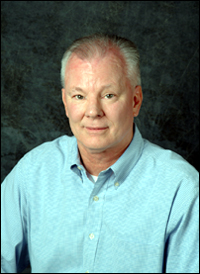Our Science – Derse Website
David Derse, Ph.D.
 |
|
|||||||||||||||||||||||||||
Biography
Dr. Derse earned his Ph.D. in 1982 from the State University of New York at Buffalo, studying inhibitors of herpesvirus and cellular DNA polymerases in the laboratory of Dr. Yung-Chi Cheng. Dr. Derse did his postdoctoral research on bovine leukemia virus gene regulation under the supervision of Dr. James W. Casey at the Louisiana State University Medical Center. After joining the National Cancer Institute in 1986 as a Senior Staff Fellow, Dr. Derse continued research on the Tax and Rex proteins encoded by deltaretroviruses. In 1991, Dr. Derse became a tenured Senior Investigator and extended his research into comparative biochemical analyses of lentivirus Tat and Rev proteins. In 2004, Dr. Derse joined the HIV Drug Resistance Program as Head of the Retrovirus Gene Expression Section. He is also an Adjunct Professor in the Graduate Program in Genetics at George Washington University in Washington, D.C. Dr. Derse currently serves on the Editorial Board of Retrovirology and the Executive Committee of the Center of Excellence in HIV/AIDS and Cancer Virology, Center for Cancer Research. His current work focuses on the molecular mechanisms of HIV-1 and HTLV-1 infection and replication.
Research
Human T-cell Leukemia Virus Type 1 Infection and Replication
Human T-cell leukemia virus type 1 (HTLV-1) is the causative agent of adult T-cell leukemia and an inflammatory neurological disease referred to as tropical spastic paraparesis or HTLV-1-associated myelopathy. Infectious transmission of retroviruses like HTLV-1 can be divided into two phases: 1) the assembly and release of virions from the infected cell and 2) virion entry and replication in the target cell. For HTLV-1, the molecular mechanisms underlying the individual steps in these processes are not well defined. Our current studies focus on these two interrelated project areas with the goal of better understanding HTLV-1 pathogenesis. Recent experimental evidence supports a model in which HTLV-1 is transmitted directly between T lymphocytes and where virus assembly, release, transmission, and replication would be synchronized with formation of a cell-cell synapse. We are examining the components and pathways that control HTLV-1 virion morphogenesis, transmission, and replication in the conceptual framework of this model. We are using biochemical, functional, and electron microscopic methods to study HTLV-1 virion assembly and release. We recently showed that interaction between a peptide motif in the viral matrix protein and a cellular NEDD4-family ubiquitin ligase (WWP1) is required for virion morphogenesis. We are currently determining what other cellular proteins are recruited to the nascent virion. We have also observed that intracellular HTLV-1 particles colocalized with the cellular transmembrane 4 protein CD82 at the plasma membrane. This finding is important, because CD82 is known to organize cell surface adhesion proteins and segregates to the immunological synapse. The association of HTLV-1 with CD82 and other cell surface and cytoskeletal proteins may be necessary to coordinate virion transmission with formation of intercellular synapses. After entry into the target cell, the viral enzymes and structural proteins form a replication complex that converts the single-stranded viral genomic RNA into a double-stranded DNA, which is integrated into the host cell chromosome. We have developed the cell culture systems, infectious molecular clones, and viral vectors that make it possible to examine HTLV-1 replication and to study anti-HTLV-1 therapeutic agents. We showed that infection with HTLV-1 virions is orders of magnitude less efficient compared with other retroviruses and that this inefficiency is the result of a post-entry block in the replication process. We are determining whether this block is conferred by the properties of viral replication enzymes, results from the actions of cellular restriction factors, reflects the need for cell-cell contact, or is caused by a combination of these factors. We have begun to characterize HTLV-1 replication enzymes and to analyze reverse transcription in infected cells. We are also determining whether the viral accessory proteins participate in coordinating and modulating the infection process. We are studying the mechanisms that HTLV-1 has evolved to evade cellular defense mechanisms that restrict the replication of other retroviruses. We have recently shown that HTLV-1 counteracts the antiviral effects of APOBEC3G by a cis-acting virion exclusion mechanism, which is very different compared with the way HIV-1 evades APOBEC3G. Although the basic schemes for transmission and replication are conserved among retroviruses, variations on common themes are likely to reveal important insights into the strategies that different viruses use for propagation and persistence in vivo. In this respect, it is useful to compare HTLV-1 and HIV-1, because both are T-cell-tropic retroviruses whose very different biological properties may be traced back to divergent strategies for escaping host-mediated immune and cellular defense mechanisms.
This page was last updated on 7/2/2008.

